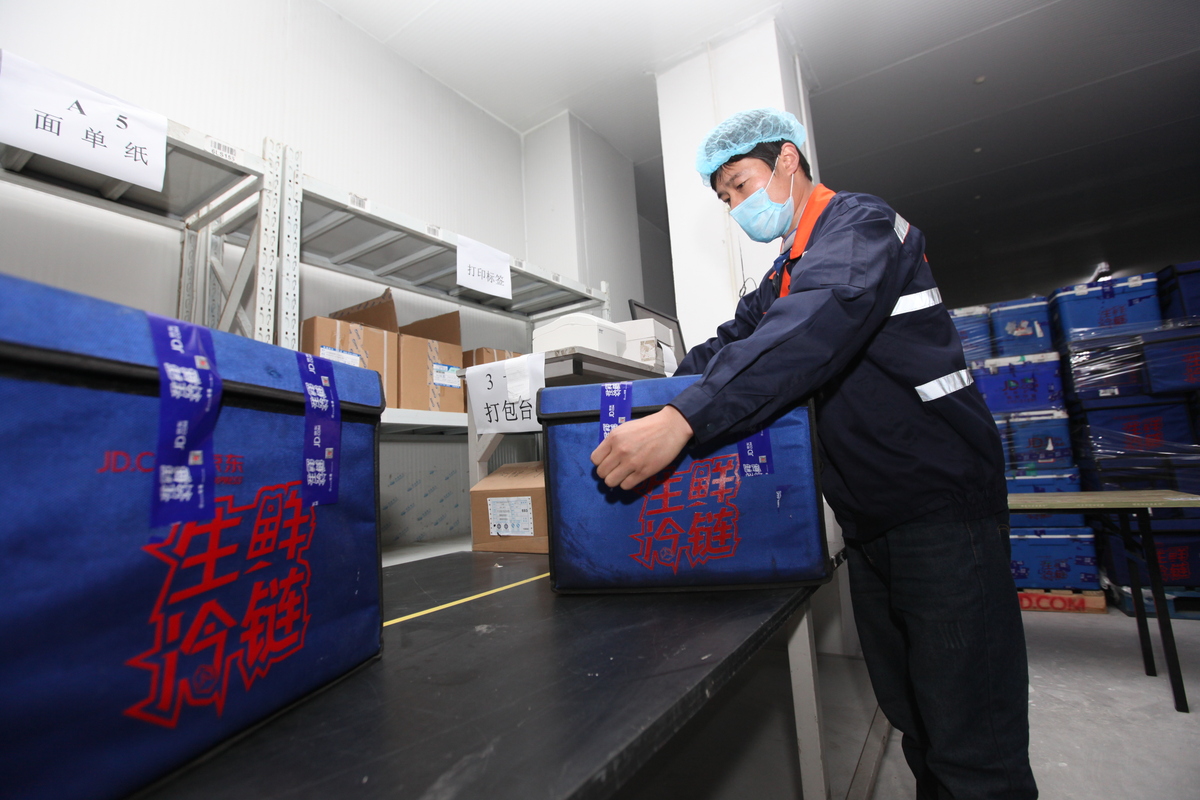Cold chain logistics in demand as epidemic boosts fresh biz
By Fan Feifei | China Daily | Updated: 2020-07-20 07:36

China's cold chain logistics market is set to witness robust growth and will likely emerge as the most lucrative sector in the industry as the novel coronavirus outbreak has boosted consumption of fresh food via online channels.
Cold chain logistics refers to the use of temperature-controlled systems within an uninterrupted series of storage and distribution activities. It is essential for e-commerce companies to reduce costs and ensure the quality of perishable goods.
Industry insiders said rise in consumption of fresh food via online channels is expected to boost investments in cold chain transportation, storage, and related segments. Scientific management of cold chain storage, the temperature during transportation and the degree of integration of supply chain segments are all crucial.
Chinese e-commerce giant JD's cold chain logistics has been key in ensuring livelihood during the epidemic as well as transporting medical supplies that have specific temperature requirements.
JD data showed its cold chain orders in the first quarter of this year increased 200 percent year-on-year. Since early April, with the resumption of transportation in and around Hubei province, whose capital Wuhan was the first epicenter of the epidemic, JD's Asia No 1 logistics park in the city has been seeing robust growth in the number of orders.
Almost 1,400 tons of fresh food products from Hubei were sold on JD within the first week of resumption of transportation. Among these, oranges, crawfish and lotus roots were the bestsellers.
The Beijing-based tech giant established its cold chain logistics network in 2014, which was in response to the increasing demand for fresh food. So far, it has operated over 20 cold chain warehouses for fresh food, and also personalized the containers, offering dry ice and other refrigerants for different products.
"We will continue to develop our network and deepen our cooperation with partners throughout the supply chain," said Li Xiuqiang, head of strategy and planning for JD cold chain logistics.
In addition, JD's cold chain was vital to medical supply delivery, especially when there were insufficient transportation resources during the outbreak. During the challenging times, JD's logistics apparatus consistently transported COVID-19 nucleic acid testing kits, insulin and other medical supplies from medical institutions to cities across China. Its integrated fulfillment process was compatible with cold chain requirements.
China's fledgling cold chain logistics market is expected to reach 470 billion yuan ($66.5 billion) by 2020, with a compound annual growth rate surpassing 20 percent, according to the China Federation of Logistics and Purchasing.
Compared with some developed countries that have mature cold chain logistics, the industry in China is still developing. Cao Lei, director of the China E-Commerce Research Center, noted that online retailers should ramp up efforts in cold chain logistics construction and increase investment in the supply chain to ensure the quality of their products.
Wang Xiaoping, associate dean of the logistics school at Beijing Wuzi University, said demand for fresh products from Chinese consumers is increasing, and e-commerce giants are gearing up to expand their presence in the cold chain field, which will drive the rapid growth of the industry.























